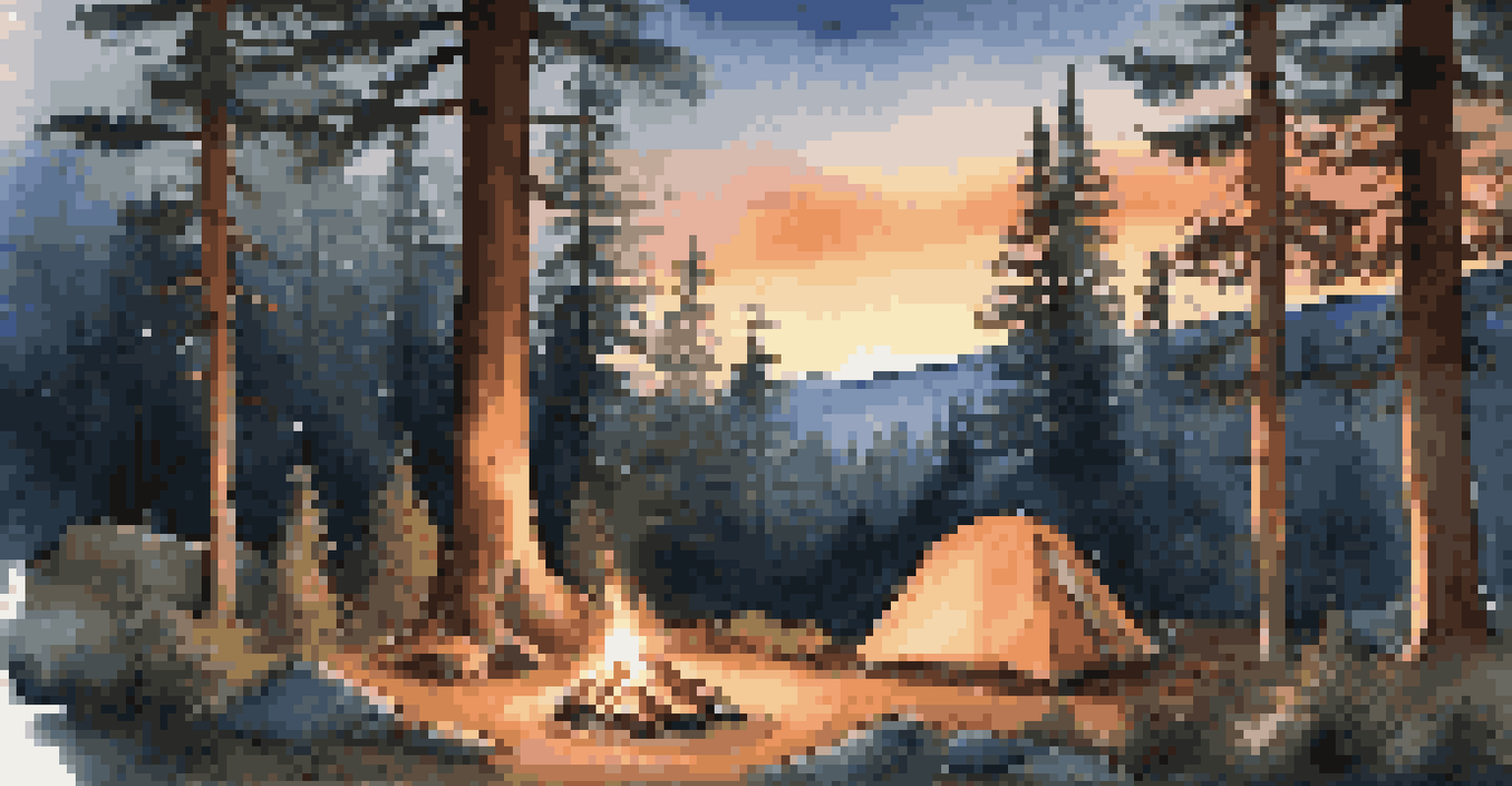Navigating National Parks: Road Trip Tips and Tricks

Planning Your Route: Choosing the Right National Parks
Before hitting the road, it’s crucial to map out which national parks you want to visit. Consider parks that are geographically close to each other, as this will save you time and fuel. For instance, if you’re in the Southwest, combine visits to the Grand Canyon and Zion National Park for a stunning experience.
The mountains are calling and I must go.
Also, think about the activities you want to enjoy. Are you drawn to hiking, wildlife watching, or simply soaking in breathtaking views? This will help you narrow down your choices and create a more tailored adventure for your interests.
Lastly, check the best seasons to visit each park. Some parks offer vibrant fall colors, while others shine in spring when wildflowers bloom. Planning around peak seasons can enhance your experience and help you avoid crowds.
Packing Essentials: Gear Up for Adventure
Packing smart is vital for a successful national park road trip. Start with the basics: comfortable clothing, sturdy hiking shoes, and weather-appropriate gear. A lightweight backpack is handy for day hikes, allowing you to carry essentials like water, snacks, and a first-aid kit.

Don’t forget to bring your camera or smartphone to capture the breathtaking landscapes and wildlife you encounter. A pair of binoculars can also enhance your wildlife viewing experience, letting you observe creatures without disturbing them.
Plan Your Route Wisely
Choose national parks that are geographically close and align with your desired activities for a more enjoyable adventure.
Lastly, consider packing some entertainment for downtime at campsites or during long drives. Audiobooks, podcasts, or playlists can keep the road trip lively and enjoyable, turning travel time into part of the adventure.
Understanding Park Regulations: Play by the Rules
Each national park has its own set of rules and regulations designed to protect its natural beauty and wildlife. Familiarize yourself with these regulations ahead of time to ensure you’re compliant and respectful during your visit. For example, some parks require permits for backcountry camping or specific hikes.
In every walk with nature one receives far more than he seeks.
Also, be aware of wildlife safety guidelines. Keeping a safe distance from animals is crucial, as it protects both you and the wildlife. Remember, feeding animals can lead to dangerous situations for both parties, so it’s best to observe from afar.
Lastly, leave no trace. This principle encourages visitors to minimize their impact on the environment. Carry out what you bring in, stay on designated trails, and respect park rules to help preserve these beautiful spaces for future generations.
Timing Your Visits: Beat the Crowds
Timing is everything when visiting popular national parks. To avoid the rush, consider arriving early in the morning or later in the evening. Not only will you beat the crowds, but you’ll also enjoy the tranquility of nature at its best during these quieter times.
Weekdays are generally less crowded than weekends, so if your schedule allows, plan your visit accordingly. This strategy can lead to a more peaceful experience, allowing you to connect more deeply with the landscape.
Pack Smart for Your Trip
Bring essential gear, including comfortable clothing and entertainment options, to enhance your national park experience.
Another tip is to explore lesser-known trails or areas within the park. While iconic spots are a must-see, venturing off the beaten path can lead to hidden gems and create a more personal connection with nature.
Staying Connected: Apps and Resources to Use
In our digital age, leveraging technology can enhance your national park adventure. Download helpful apps that offer maps, trail information, and even wildlife identification tips. This can be particularly useful in keeping you on track and informed as you explore.
Many parks also have their own apps or websites that provide real-time information on trail conditions, weather updates, and upcoming events. By staying connected, you can make the most of your visit and adjust plans as necessary.
Don’t forget to download offline maps just in case you lose cell service in remote areas. This ensures you can navigate without hassle, allowing you to focus on enjoying the beauty around you.
Camping Tips: Enjoying the Great Outdoors
Camping is a fantastic way to fully immerse yourself in the natural beauty of national parks. When selecting a campsite, consider factors like proximity to trails, water sources, and restroom facilities. Popular spots can fill up quickly, so make reservations in advance when possible.
Ensure you pack quality camping gear, including a durable tent, sleeping bags suitable for the season, and cooking equipment. Preparing simple meals over a campfire can be a delightful experience, bringing a sense of adventure to your dining.
Prioritize Safety in Nature
Stay informed about park regulations, prepare for potential hazards, and always have a first-aid kit on hand for a safe visit.
Lastly, embrace the outdoors by disconnecting from technology. Spend your evenings stargazing, sharing stories around the campfire, or simply enjoying the sounds of nature. This unplugged experience can be refreshing and rejuvenating.
Safety First: Staying Safe in Nature
Safety should always be a top priority when exploring national parks. Familiarize yourself with the park’s terrain and possible hazards, such as wildlife encounters or sudden weather changes. Wearing appropriate footwear and staying hydrated can prevent many common issues.
Always let someone know your planned route and estimated return time, especially if you’re venturing into less-traveled areas. This simple step can be a lifesaver in case of emergencies.

Lastly, carry a fully stocked first-aid kit and know how to use its contents. Being prepared for minor injuries or illnesses can make a significant difference in your outdoor experience.